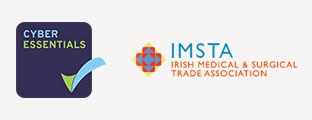News
-
 01.11.2010/ Karl Storz launch the HAVAS Video Laryngoscope
01.11.2010/ Karl Storz launch the HAVAS Video Laryngoscope
HAVAS Video Laryngoscope and Integrated Light Carrier / Telescope Holder
The new HAVAS Video Laryngoscope from KARL STORZ represents a significant step forward in endoscopic laryngeal surgery.
The HAVAS Video Laryngoscope comes as an integrated unit and comprises
- Video Laryngoscope
- Integrated light carrier telescope holder
- Telescope sheath protector
The scope is designed to provide optimal visualisation of the supraglottic and glottic airway with angulation of the tip to facilitate difficult to see/reach areas like the anterior commissure and the anterior end of the laryngeal ventricles.
The integrated light carrier/telescope holder facilitates introduction of the laryngoscope with excellent illumination.
Once the laryngoscope is introduced it is suspended in the usual manner using the BENJAMIN-PARSONS laryngoscope holder and chest support.
The telescopic sheath protector facilitates the introduction of any standard 4 mm, 0°, 30°, 70°, 90° or 120° telescope. The telescope is inserted into the sheath and is anchored in the integrated light source/telescope holder. This facilitates detailed endoscopic examination of all portions of the endolarynx including the laryngeal ventricles, the anterior commissure, the anterior subglottic wedge, the posterior commissure and interarytenoid bar. These telescopes are ideally coupled to a light weight KARL STORZ digital camera with integrated digital focus/zoom.
The laryngoscope is designed with cut-out lateral ports to facilitate the introduction of either standard KARL STORZ microsurgical instruments or preferably the new malleable HAVAS microlaryngoscope instruments. This facilitates bimanual endoscopic laryngeal surgery using a monitor rather than an operating microscope.
The combination of the laryngoscope and angled telescopes also facilitates the introduction of new fibreoptic lasers such as pulsed diode lasers.
This technique of microlaryngeal endo-surgery is ideal not only for documentation of various laryngeal pathologies but also a variety of microlaryngeal surgeries.
It represents a significant step forward in accessing the larynx in a minimally invasive, minimally traumatic way.

 Integrated theatres, Endoscopic camera systems, Endoscopic units, Telescopes and Instruments for all disciplines
Integrated theatres, Endoscopic camera systems, Endoscopic units, Telescopes and Instruments for all disciplines
 Patient Warming Blankets and Temperature Management Systems
Patient Warming Blankets and Temperature Management Systems
 Portering Chairs, I.V Poles, Examination Couches, Surgeons Stools
Portering Chairs, I.V Poles, Examination Couches, Surgeons Stools
 Laundry Carts, Bulk Transport Carts, Catering Trolleys, CSSD Tables, Racking and Equipment
Laundry Carts, Bulk Transport Carts, Catering Trolleys, CSSD Tables, Racking and Equipment

